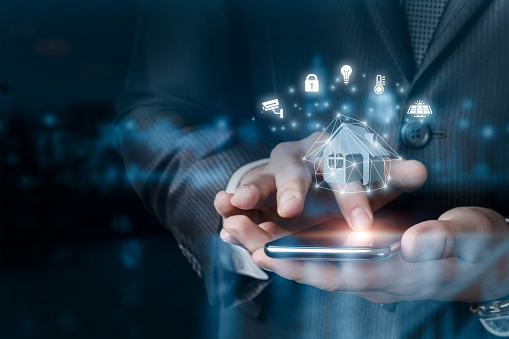If you’ve been keeping up with technology trends, you’ve likely heard the term “smart home automation” thrown around quite a bit. But what exactly is it, and what does the future hold for this exciting industry?
Simply put, smart home automation refers to the integration of various devices and systems within your home to create a more seamless, intuitive living experience. This can include everything from smart thermostats and lighting systems to voice-activated assistants like Amazon’s Alexa or Google Home.
But what makes smart home automation so exciting is the potential for these devices to work together seamlessly, creating a fully automated and interconnected ecosystem. Imagine waking up in the morning to the smell of freshly brewed coffee, as your smart coffee maker begins to brew a fresh pot the moment your alarm goes off. Your smart thermostat adjusts the temperature to your preferred setting, and your smart blinds gradually open to let in the natural light.
As you get ready for the day, your smart mirror reminds you of your schedule and the weather, while your smart shower adjusts the water temperature and pressure to your liking. And as you leave for work, your smart security system locks the doors, turns off the lights, and sets the alarm – all with just a few taps on your smartphone.
This may sound like science fiction, but the reality is that smart home automation is already here – and it’s only going to get better. In fact, experts predict that the smart home automation industry will be worth over $100 billion by 2026, with more and more devices and systems being added to the market every day.
So what can we expect from the future of smart home automation? Here are just a few predictions:
- Increased Integration: As more devices and systems become smart-enabled, we can expect them to work together seamlessly. This means that your smart refrigerator may one day be able to communicate with your smart oven to automatically adjust cooking times and temperatures based on the ingredients you have on hand.
- More Voice Control: Voice-activated assistants like Alexa and Google Home are already popular, but we can expect even more devices to incorporate this feature in the future. Imagine being able to control your entire home with just your voice, from adjusting the lighting to opening the blinds to ordering a pizza for dinner.
- Greater Energy Efficiency: Smart home automation can help reduce your energy usage and lower your bills. For example, your smart thermostat can learn your daily routine and adjust the temperature accordingly, while your smart lighting system can turn off lights in empty rooms.
- Improved Security: Smart home security systems are becoming more advanced, with features like facial recognition, voice recognition, and real-time monitoring. We can expect even more innovations in this area in the coming years, making our homes safer and more secure than ever before.
Of course, with any new technology comes potential challenges and concerns. Privacy is one such concern, as smart home devices collect and transmit data about our daily lives. However, as the industry grows and matures, we can expect to see more regulations and safeguards put in place to protect our privacy and security.
Overall, the future of smart home automation is bright, with endless possibilities for making our lives easier, more efficient, and more enjoyable. So why not join the millions of people already embracing this exciting new technology, and make your home a little smarter today?

